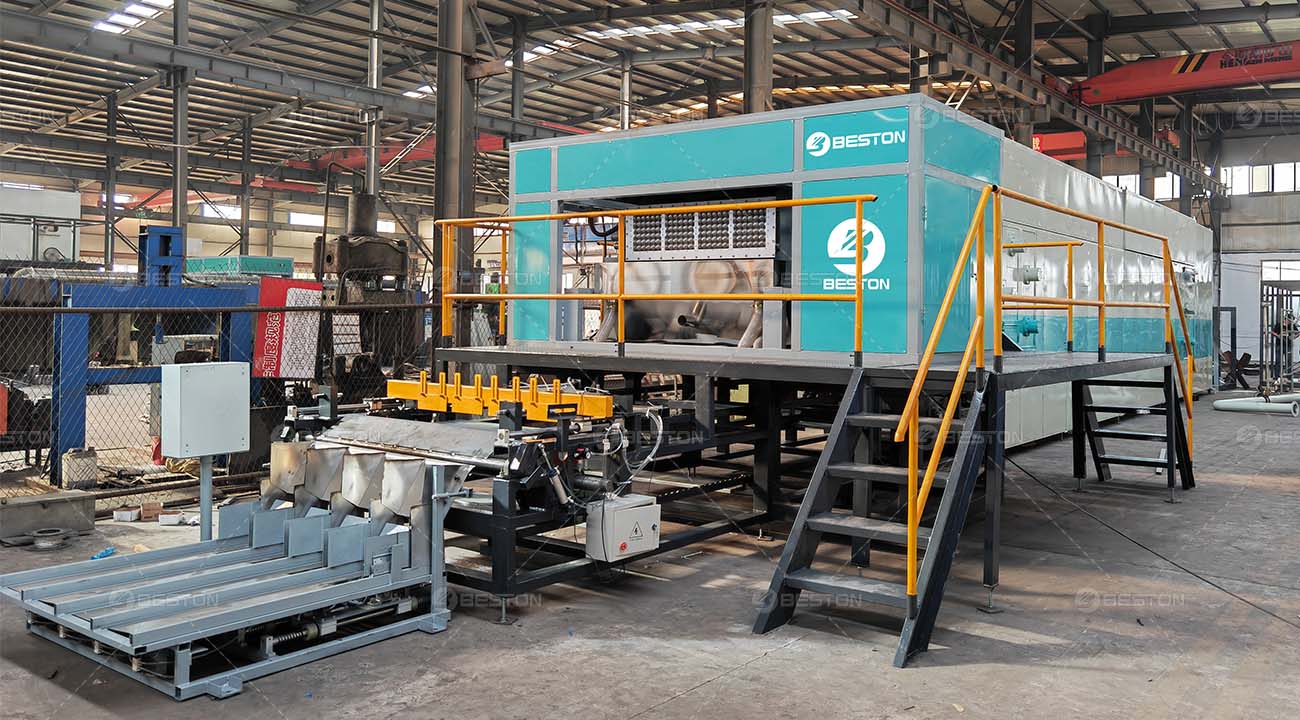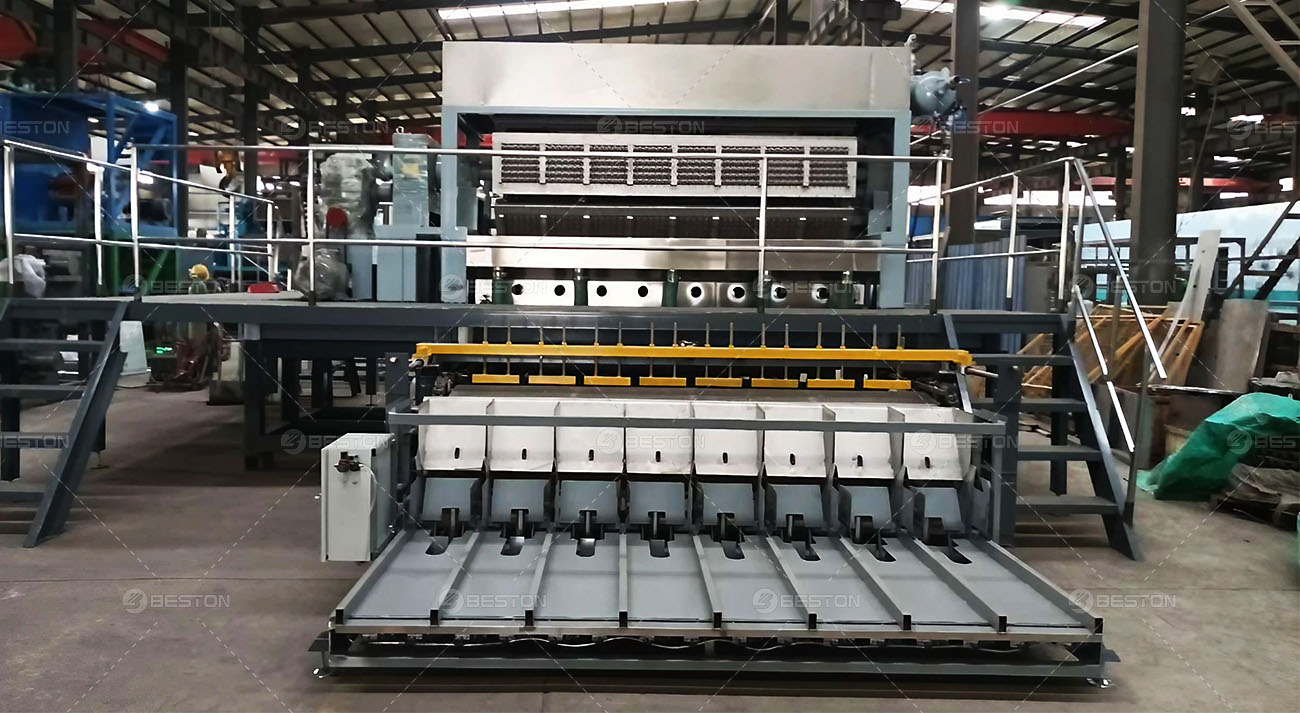In recent years, there has been a significant shift towards sustainable and eco-friendly packaging solutions across various industries. The egg packaging sector, in particular, has seen a marked increase in the adoption of pulp molding technology. This method, which converts waste paper into sturdy and biodegradable egg trays, offers numerous advantages over traditional plastic and foam packaging. From environmental benefits to economic efficiency, pulp molding egg packaging represents a comprehensive solution for modern packaging needs.

Environmental Sustainability
One of the most compelling advantages of pulp molding egg packaging is its environmental sustainability. Unlike plastic and foam, which are derived from non-renewable resources and are not biodegradable, paper egg tray making machine uses recycled paper as its primary raw material. This not only reduces the demand for virgin paper but also diverts waste paper from landfills, contributing to a circular economy.
Pulp molding egg trays are fully biodegradable and compostable. When disposed of, they break down naturally in the environment, leaving no harmful residues. This characteristic is particularly important in reducing the environmental impact of packaging waste, a growing concern in today’s society. Additionally, the production process for pulp molding is less energy-intensive compared to plastic manufacturing, resulting in lower carbon emissions.
Protection and Cushioning
Another key advantage of pulp molding egg packaging is its excellent protective qualities. Eggs are delicate products that require careful handling to avoid breakage during transport and storage. Pulp molding provides superior cushioning and shock absorption, reducing the risk of damage. The structure of the molded pulp conforms closely to the shape of the eggs, cradling them securely and distributing any external pressure evenly across the surface.
Furthermore, pulp molding trays are resilient and can absorb moisture without compromising their structural integrity. This is particularly beneficial in environments with fluctuating humidity levels, as it prevents eggs from becoming damp, which can lead to spoilage. The trays also offer ventilation, which helps maintain the freshness of the eggs by allowing air to circulate freely around them.

Economic Efficiency
Economic efficiency is a crucial consideration for any packaging solution, and pulp molding egg packaging excels in this regard. The cost of production for molded pulp trays is generally lower than that of plastic or foam alternatives, primarily due to the use of recycled materials and the simplicity of the manufacturing process. This cost-effectiveness is particularly evident when considering the fully automatic egg tray machine price, which has become increasingly competitive as the technology has matured.
Egg tray machines designed for pulp molding are versatile and can produce a variety of tray sizes and configurations, catering to different market needs. The ability to adjust the production process to meet specific requirements without significant additional costs makes pulp molding a flexible and economical option. Additionally, because the raw materials for pulp molding are readily available and inexpensive, manufacturers are less susceptible to fluctuations in material costs, leading to more stable pricing for the end product.
Customization and Branding
Pulp molding also offers significant advantages in terms of customization and branding. Manufacturers can easily adjust the mold designs to create egg trays that fit specific branding requirements, including logos, patterns, and colors. This level of customization is harder to achieve with plastic or foam packaging without incurring higher costs.
The texture and appearance of pulp molding trays also convey a natural and eco-friendly image, which aligns well with the growing consumer demand for sustainable products. Brands that use molded pulp packaging can leverage this to enhance their market positioning and appeal to environmentally conscious consumers. Additionally, the ability to produce bespoke tray designs can help differentiate products on the shelf, offering a competitive edge in the marketplace. Excellent machine manufacturers can provide this kind of service, and Beston Group is a good choice.
Regulatory Compliance
As environmental regulations become more stringent, packaging materials that are difficult to recycle or that contribute to pollution are increasingly subject to restrictions or bans. Pulp molding egg packaging is inherently compliant with these regulations, as it is made from recycled materials and is fully biodegradable. This compliance reduces the risk of regulatory issues and aligns with corporate sustainability goals.
Many regions are also introducing extended producer responsibility (EPR) programs, which place the onus on manufacturers to manage the lifecycle of their products, including disposal. Pulp molding, with its minimal environmental impact and ease of disposal, positions manufacturers to meet these regulatory requirements more easily than those using plastic or foam packaging.
Conclusion
Pulp molding egg packaging offers a host of advantages that make it an ideal choice for both manufacturers and consumers. Its environmental benefits, combined with superior protection, economic efficiency, and customization potential, provide a compelling case for its adoption. As the demand for sustainable packaging continues to grow, pulp molding technology is likely to play an increasingly important role in the future of egg packaging. The combination of competitive egg box machine price and the ability to meet regulatory requirements further enhances the appeal of pulp molding as a modern, forward-thinking solution.